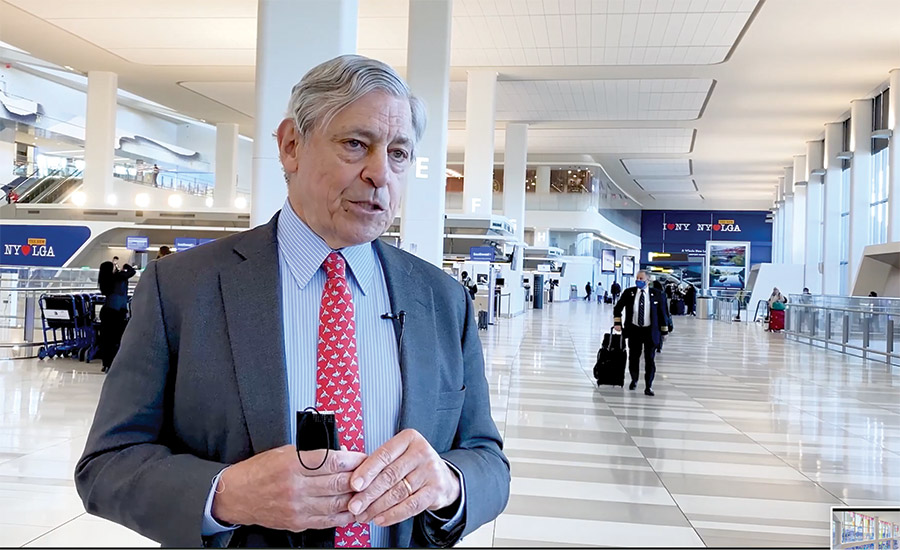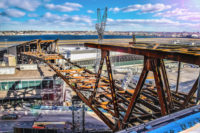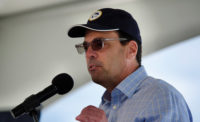Related Article:
LaGuardia Nears On-Time Arrival
Back to:
25 Top Newsmakers
Rick Cotton pulled no punches when talking about the need to transform LaGuardia International Airport. Speaking to ENR last year while standing in the light-filled, glossy new Terminal B, he said, “LaGuardia had become the laughingstock of the city, nation and probably the world. It was subpar, out of date, and desperately needed to be replaced.”
As executive director of the Port Authority of New York and New Jersey, Cotton coordinated the unprecedented task of building $8 billion in new airport facilities while keeping passengers and planes moving. The public-private partnership utilized to build a new $4-billion Terminal B was the largest of its kind in the U.S.
“Rick Cotton has a passion for airport redevelopment, and we are grateful for his leadership during the redevelopment of Terminal B,” says Frank Scremin, CEO of LaGuardia Gateway Partners, the developer and manager of the new Terminal B. “Rick did not lead from behind his desk, but rather embraced regular early morning site visits to ensure he was fully immersed in the project. His sage guidance proved to be an immeasurable asset to all of us at LaGuardia Gateway Partners.”
The terminal features a 482-ft-long western pedestrian bridge and a 440-ft-long eastern bridge, both 2,500 tons, that are the firsts of their kind and opened up two miles of new taxiway space.
Meridiam, along with Vantage, Skanska and JLC Infrastructure, comprises LaGuardia Gateway Partners, the development and equity investment team that will operate the terminal through 2030. Skanska-Walsh is the design-build joint venture. HOK and WSP led design.
“The big picture in terms of P3s is that from the point of view of the public agency, bringing in a private partner has advantages,” Cotton said. “Financing with private capital means public capital can go further. The private sector in certain areas does things better, such as construction. It was a win-win.”
And the P3 was only one effort under way there. Delta Air Lines completed a $4-billion adjacent terminal at the same time as the Teminal B project. “The huge challenge was the decision to keep operating during construction,” Cotton told ENR. “LaGuardia is a postage stamp. It literally can fit inside Central Park with 150 acres to spare.” Cotton was well-prepared for the challenge. Prior to joining the port authority, he served as New York State’s Special Counsellor to the Governor for Interagency Initiatives, focused on not only LaGuardia and John F. Kennedy International Airport but also the Moynihan Train Hall and Penn-Farley Complex, the new Tappan Zee Bridge, the expansion of the Javits Center, and the Second Avenue Subway.
Under his watch, the agency also successfully completed a new $2.7-billion terminal at Newark Liberty International Airport in New Jersey during the pandemic. Construction started in 2018 and continued even as other projects in the state shut down for more than two months, delivering a 1-million-sq-ft facility and 33 new gates.
Encouraged by the success of these projects, the port authority is now going even bigger, with $15 billion in work at JFK airport. Millennium Partners will develop a $3.9-billion, 1.2-million-sq-ft terminal for JetBlue. Construction of the new terminal is scheduled to begin this year, with the first gates to open in 2025. Delta broke ground on a $1.5-billion terminal at JFK last year.
“Rick Cotton has been called a master builder,” says James Starace, the port authority’s chief engineer. “He combines vision with attention to detail and was instrumental in transforming LaGuardia Airport into one of the best and most modern airports in the world.”





